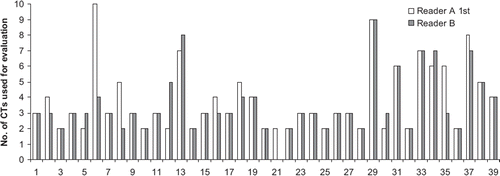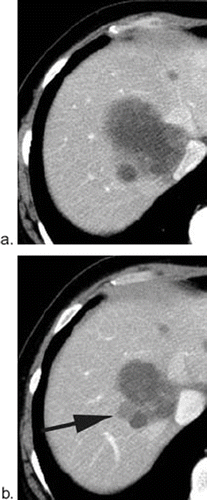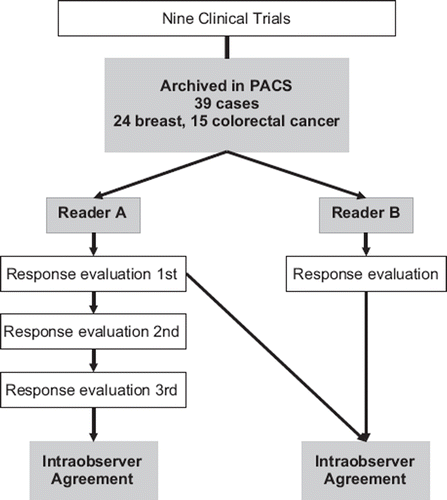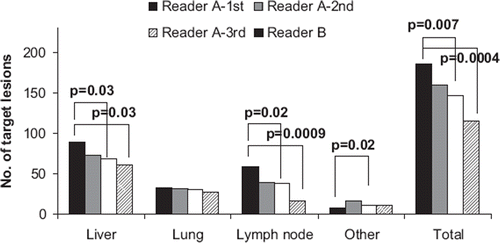Figures & data
Figure 2. Number of CT examinations used for RECIST evaluation by reader A 1st and reader B. Each patient was followed from inclusion until when PD was demonstrated on CT or closing date of current study. Since reader B did not considered that patient No. 21 had any measurable lesion, radiological response evaluation was not performed in this case.

Figure 4. Possible cause for inconsistency; difference in measurement. A 62-year-old patient with retrosternal lymph node metastasis (arrow) before (a and b) and after therapy (c). Figure (a) and (b) represent two consecutive sections at the baseline study. If the tumor was measured as shown in (a), the patient will be classified as SD. On the other hand, if the same lesion was measured as shown in (b), the patient will be classified as PR.

Figure 5. Non-weighted kappa coefficient value and corresponding 95% confidence interval (CI) for agreement.

Table I. Joint judgments of two readers regarding tumor responses according to RECIST.
Table II. Joint judgments of two readers regarding tumor responses according to WHO-criteria.
Figure 6. Possible cause for inconsistency; “new lesion”. A 50-year-old patient with multiple liver metastases at the baseline study (a). After seven cycles of treatment, a low-attenuation lesion was depicted adjacent to the known metastases (arrow in b). Reader A interpreted this lesion as a “new lesion” indicating progressive disease (PD) regardless decrease size of other metastases, while reader B interpreted this lesion existed at baseline and classified as partial response (PR).

Table III. Joint judgments of two readers regarding detection of new lesions and/or progression of non-target lesions.


